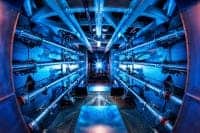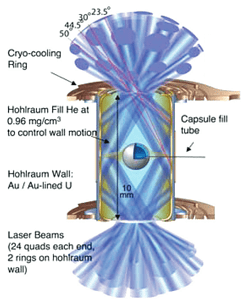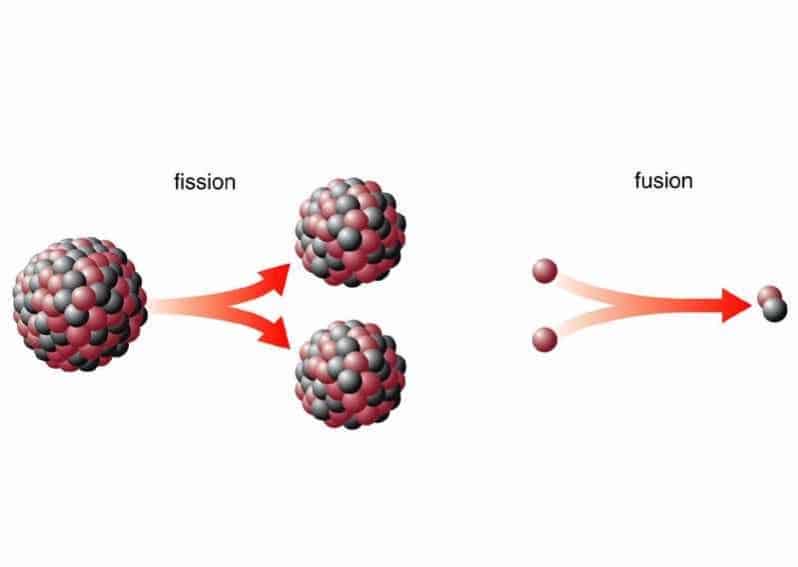Physicists have been dreaming of achieving controlled nuclear fusion for decades, and year by year we’ve been getting closer to turning it into reality. A recent paper published in the journal Physics of Plasmas reports improvements in the design of an experimental set-up capable of igniting a self-sustained fusion reaction with high yields of energy. Researchers at the National Ignition Facility (NIF) claim they’re currently tackling one big obstacle that comes is in the way of fusion ignition.

Nuclear fusion is a nuclear reaction in which two or more atomic nuclei collide at very high speeds and energies and fuse together leading to the creation of a new atom. At the dawn of the Universe, there was only Hydrogen, and it is through fusion that all the other elements surfaced. If lighter elements are fused (lighter than Iron), the nuclear reaction releases energies – lots of it. If the fused elements are heavier than iron, then the reaction absorbs energy. This is why in fission, which is the exact opposite of nuclear fusion, very heavy elements are employed to release energy.
Nuclear fusion, however, requires tremendous amounts of energy to kick-start. The challenge lies in designing reactors that capable of producing more energy than it goes into igniting the reaction. Even so there are technical challenges in order to achieve the highly stable precisely directed implosion required for ignition. One such obstacle has been outlined the NIF researchers in their report.
Closer to a fusion dream

To achieve ignition, NIF reserachers used 192 laser beam that fire simultaneously inside a specially designed cryogenic hollow chamber called a hohlraum (German for “hollow room”), just the size of a pencil. Together the combined power of the lasers deliver 1.8 megajoules of energy and 500 terrawatts of power – 1,000 times more than the United States uses any single moment – inside the hohlraum in billionth-of-a-second pulses. All this power is directed towards a ball-bearing-size capsule containing two hydrogen isotopes, deuterium and tritium (D-T) inside the hallow chamber, which creates a sort of “X-ray oven” that implodes the isotope capsules to temperatures and pressures similar to those found at the center of the sun.
“What we want to do is use the X-rays to blast away the outer layer of the capsule in a very controlled manner, so that the D-T pellet is compressed to just the right conditions to initiate the fusion reaction,” explained John Edwards, NIF associate director for inertial confinement fusion and high-energy-density science. “In our new review article, we report that the NIF has met many of the requirements believed necessary to achieve ignition—sufficient X-ray intensity in the hohlraum, accurate energy delivery to the target and desired levels of compression—but that at least one major hurdle remains to be overcome, the premature breaking apart of the capsule.”
The NIF researchers used monitoring tools to diagnose the capsule breaking step by step.
“In some ignition tests, we measured the scattering of neutrons released and found different strength signals at different spots around the D-T capsule,” Edwards said.
“This indicates that the shell’s surface is not uniformly smooth and that in some places, it’s thinner and weaker than in others. In other tests, the spectrum of X-rays emitted indicated that the D-T fuel and capsule were mixing too much — the results of hydrodynamic instability — and that can quench the ignition process.”
The NIF scientists are now concentrating all their efforts on determining the exact nature of this instability and mitigate it. This is only one big obstacle the scientists face. There are still many major milestones that need to be reached, but advances and reports so far are promising – we’re getting there: tremendously large, clean and safe energy.






